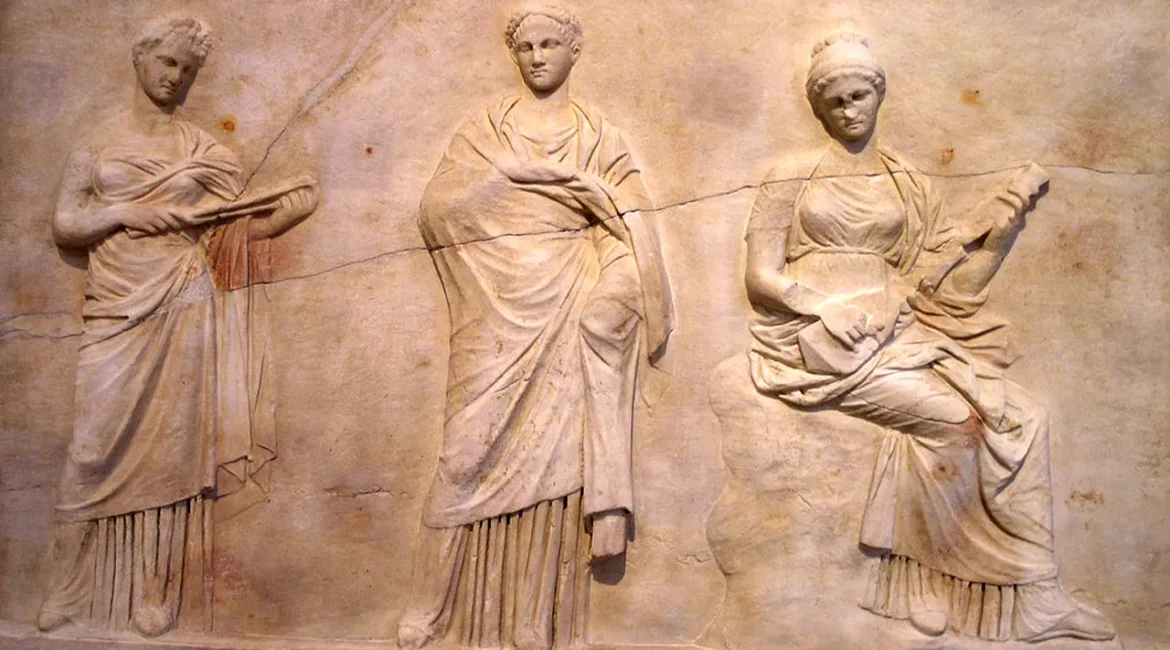Welcome to the Bouzouki music school,
Humanity began to communicate long before the writing of spoken languages was invented. In the same way, society also created music before it was transcribed on paper. The oldest form of musical notation dates from a cuneiform tablet found in Nippur, Babylonia (modern-day Iraq), around 1400 BC. Initially, our ancestors used their voices as musical instruments. Later, they created musical instruments made of wood, animal, and bird bones.
Archaeological evidence supports the idea that art, creativity, and music were part of their lives as the modern human brain evolved. In this way, the culture of the nations was created. How many kinds of music have appeared in different eras? Then, the musical traditions were passed down from generation to generation. Music is constantly evolving, as are musical instruments, music types, and musicians.
The definition of a musician is someone who has musical talent. A skilled musician is a professional performer, composer, or conductor of music – or a simple instrumentalist without musical training. Even today, most musicians play “by ear” without using written or transcribed music. Most world-renowned artists do not know how to read music and do not know what music theory involves. But most of them were born and raised in a musical environment. Others, in some cases, have had the opportunity to become experts in this type of music that they represent entirely by chance or from a source of talent.
Others, in some cases, have had the opportunity to become experts in this type of music that they represent entirely by chance or by source talent. Some generations have wanted to understand the ideas behind sounds better, and in this way, music theory has evolved. Music theory is a set of instructions and practices used to find different ways of expressing emotions through sound. The benefit of music theory is that it helps us interpret musical compositions, communicate with other musicians, and create and understand music clearly and distinctly.
The ancient Greeks came up with some ideas. The crucial personalities in the theory of ancient Greek music were Pythagoras the Samian (c. 570 – c. 495 BC) and Aristoxenus (c. 375 – c. 304 BC). In the Middle Ages, the musicians of the catholic church (of the west) and the Greeks (of the east) created the ways that evolved into the scales we know today. By the Renaissance, notation was becoming more common.
Many different types of music notation have been invented, and some, such as the tablature, you still use (look at how to learn the guitar). However, the most common way to write music is through the stave, also known as five horizontal lines and four intervals. In today’s reality, this type of written music is so common that you call it “common notation”. Nowadays, music is for everyone. You do not have to lean towards music to become a musician. The way to become a musician to explore the hidden mechanisms of music and understand how it works with common sense is now easy. Reading music means that you can see and understand the structure of the piece and the way you assemble it, allowing you to understand the whole composition better. Based on this mentality, conservatories are evolving even today.
You do not have to lean towards music to become a musician. The way to become a musician is to explore the hidden mechanisms of music and to understand the whole composition better. Based on this mentality, conservatories are evolving even today.
Our rebetika and folk music were inspired and influenced by the music of Byzantium and by the Greeks who lived in the coastal cities of today’s Asia Minor during the Ottoman era. With the destruction of Smyrna, rebetiko came to mainland Greece, which is prospering until today.
With all these weapons in my quiver, my learning method of bouzouki intervenes. (Three-string and four-string). In this music school, you learn how to read, write, and orchestrate the other instruments that will accompany your bouzouki and produce/mix your music. At the same time, you learn the secrets of the bouzouki, such as its classical repertoire and techniques that exist today by all the instrument professionals. If I deem it useful for your learning, I can orchestrate and teach you any musical composition, even an improvisation (taximi). In the musical notation, you also indicate the style of each player, which I can translate into a score, even the most insignificant detail.
The bouzouki singer must finally become a musician with knowledge of music education, as the conservatories teach the other musical instruments. Based on this logic, this method is created to make virtuoso bouzouki performers or performers with a complete musical education.

